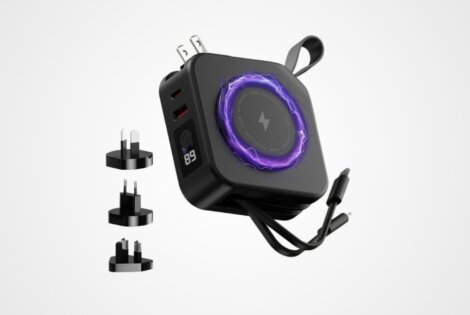
It doesn’t matter whether you have a small or medium-sized business, you always want to know how to increase your income. Have you ever thought about developing a mobile app for your business? Probably yes, but if you are still hesitating, this guide might ease your doubts. Developing a mobile app for your business has lots of benefits. Check out this statistic, and you’ll see how many users buy online using mobile apps. By the way, all of them are your potential clients! Therefore, investing in mobile app development might be the right solution!
It goes without saying that you can’t accomplish this without the services of a professional mobile app development agency. But before hiring experts, you need to at least understand the details of the mobile app development cycle. So let’s review the process and main challenges that you may encounter along the way.
Marketing Research
You probably have some ideas and know what features your app should have, but before you delve into the specifics of the programming phase, you should do comprehensive marketing research. Here are a few questions that you need to find an answer to:
- What are your marketing objectives?
- What should your app do?
- What about your target demographic, who are they?
- What platforms are you going to use?
- Think about the frameworks your app should be built with.
- Analyze your business rivals. What services do they deliver? Do they use mobile apps?
- What’s your budget?
- What’s your deadline?
- How are you going to promote your mobile app?
You should discuss all of these questions with your programming team; feedback from experts in the early stage will normally guarantee the best result.
Set the Objectives of Your Mobile App
What problem should your app solve? What options should it include? When you answer these questions, you’ll understand what objectives you want to achieve and set the overall budget of your product.
Building Your Wireframes
Building a storyboard and sketching out your app is a crucially important stage. Its main purpose is to visualize how your app will look like. Today, there are lots of powerful tools that are used for wireframing. All of them allow you to create a clear picture of how your ideas will fuse together into one mobile application. Storyboards or roadmaps are developed for showing the connections between each screen and how your future users will be navigating through this application.
The Backend Development
When dealing with a professional programming team, you won’t be bothered by this question. However, you should understand the basics. When you create wireframes, they will serve as a basis for the backend structures (data diagrams, APIs, push notifications, servers, etc.).
Testing Your Prototype
When all the discussions about the wireframe are finished, your development team may start working on an interactive prototype. By the way, prototyping is a crucially important stage that allows you to check design concepts, analyze feedback, and check the usability of your app. Programmers usually do this with the help of specific prototyping tools.
Moreover, at this stage, it would be better to have it tested by people who have nothing to do with development. They will evaluate the prototype and help you find some weak points. Moreover, you’ll see how they interact with your application, and you’ll ask them to share their honest feedback regarding the functionality of your app.
The Development Stage
Indeed, this stage involves a wide array of other processes and steps. We aren’t going to discuss all of them; we just want to add that the success of your project relies on the work ethic and skills of your development team. Usually, this stage lasts either a few days or a few months ( a lot depends on the complexity of your app and the number of features).
At this stage, you’ll also deal with designers, who will develop the app “skins” that will be used in your mobile app. Make sure your designer incorporates all the renderings of your wireframes that were created at earlier stages.
Testing
Our congratulations – you finally have a full app concept! But before you send it to the App Store or Google Play Market, you need to test it! You simply can’t miss this stage! When you test your product in a number of real-world scenarios, you’ll find all the bugs and correct all the technical flaws.
When you know for sure that your app is running smoothly and without any glitches, you can finally send it to the app store. Never neglect this stage! Otherwise, you’ll lose your clients. No one wants to use the app that includes a variety of bugs and tech issues.
After you release your product, it is time to create some buzz and advertise it. There are lots of marketing tools that allow you to build an effective marketing campaign.
As you see, the whole process is not as difficult as it seems at first glance. When you understand all the main processes in the app lifecycle, it will be easier for you to be prepared for the coding stage. By the way, when hiring an experienced and qualified software development team, you can feel certain that you’ll get a great product that will help boost your sales!







